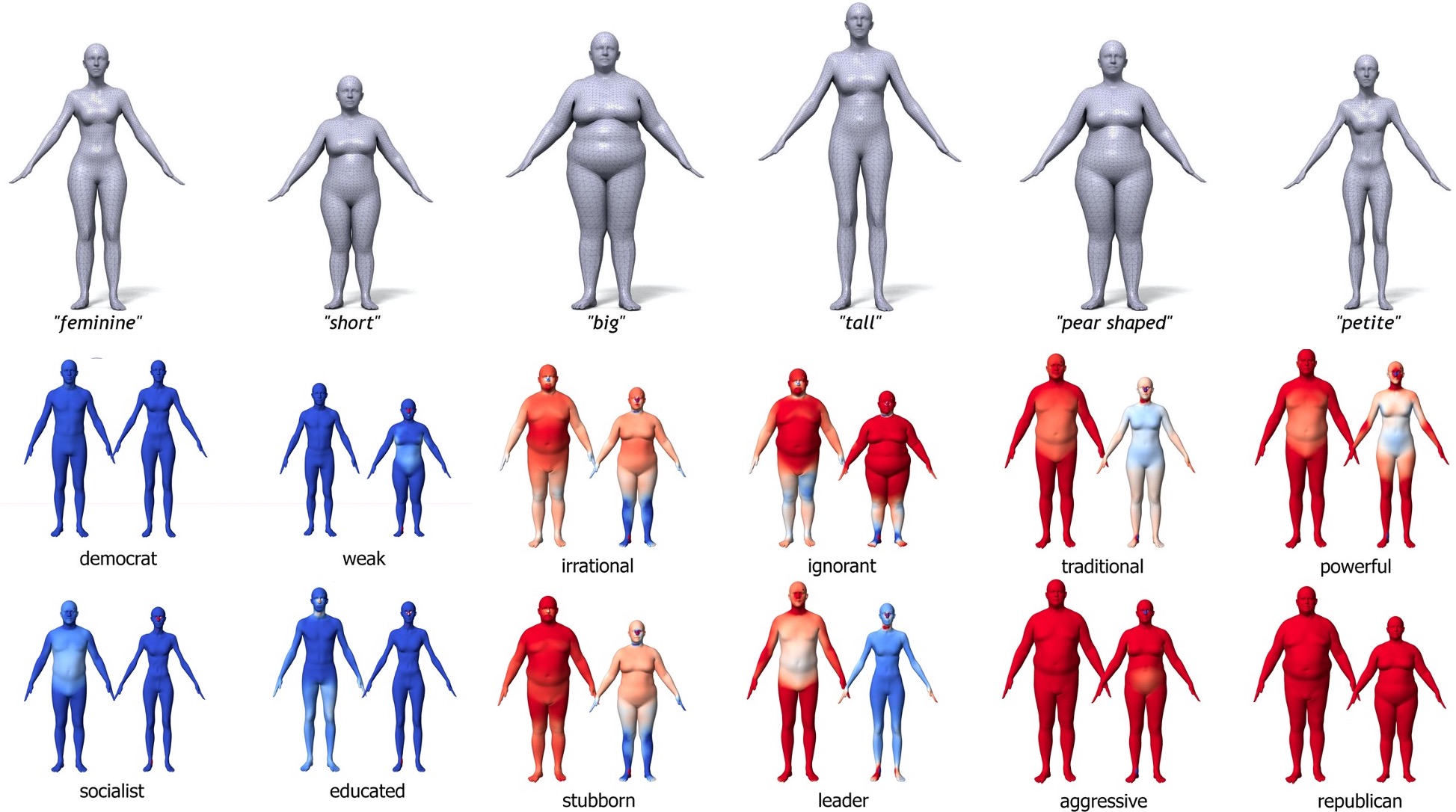
(top) Prototypical body shapes generated by BodyTalk, relating 3D shape to linguistic descriptions of shape. Shown are the most likely body shapes, conditioned on the words below them. (bottom) Each body pair illustrates the 3D mental representation associated with different political traits for male and female bodies. Blue indicates a geometric closeness to the Democrat stereotype, while red represents geometric closeness to the Republican stereotype.
Our bodies say something about us. We have names for body shapes like "hourglass" or "pear shaped" [ ]. People also make social judgments based on body shape. To understand this we have developed methods to relate linguistic descriptions of people to 3D body shape [ ].
Linguistic descriptions of body shape are naturally used to convey the physical appearance of people to others. For example, writers aim to create an image of a fictional character in the reader's mind with words, and crime witnesses are asked to verbally describe the appearance of the suspect to a sketch artist. Can we use this same procedure to recreate 3D human body shape? Do we share an understanding of 3D meaning of these shape descriptions?
We use crowdsourcing to generate attribute ratings of 3D body shapes corresponding to standard linguistic descriptions of 3D shape (for example, 'big', 'fit', 'feminine' or 'pear shape'). We also use non-shape words like 'ignorant', 'liberal', or 'Republican'. We then learn a function relating these ratings to 3D human shape parameters.
Given an image of a person, we use crowdsourcing to collect linguistic ratings of their body shape; this provides strong constraints on their 3D shape. These "crowdshaped" bodies are perceptually indistinguishable from bodies created from high-resolution scans and their metric accuracy is sufficient for many tasks.
Our model provides insight into social biases [ ] based on body shape. In particular, in the absence of other information, people make judgements about leadership traits based only on body shape [ ]. Voters find certain body shapes to be more trustworthy, more leader-like, more compassionate, or more conservative.
These findings can help raise awareness of unconscious biases in trait perception from body shape. Awareness is the first step in overcoming such biases that can affect decision making in elections, healthcare, the legal system, and education.
